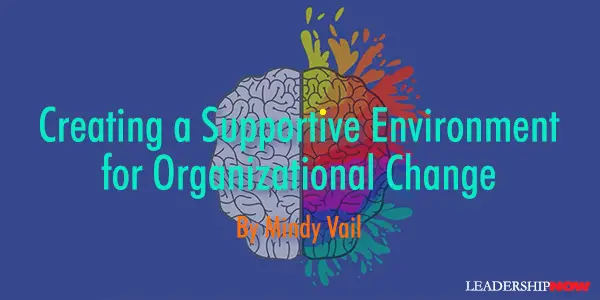 |
 |
05.20.24

Creating a Supportive Environment for Organizational Change
TODAY, change management is an integral part of organizational strategy. Yet, change in any form or context tends to challenge our sense of stability and security. Whenever new concepts, methods, or ways of thinking are introduced, they are bound to come up against resistance. Apprehension about the future impedes progress and undermines well-conceived change efforts. What’s more, in any change initiative, making assumptions regarding people’s perspectives toward a given change can undermine its success. Picture a runner at the start line of the Boston Marathon. While this runner is prepared to sprint when the starting gun fires, those further back are unaware that the race has begun and, given their position in the pack, will start out at barely a jog. In change management, assuming everyone is prepared at the same time to move at the same pace can result in miscommunication, resistance, and disengagement. When all team members that the change impacts haven’t been adequately informed or involved in the process, it leads to disparities in understanding and engagement. Effective leadership during times of change involves recognizing and managing one’s own reactions while also understanding and empathizing with the responses of others. It requires that leaders acknowledge employees’ struggles, facilitate open communication, and offer support. Conversely, turning a blind eye to these issues only erodes trust and morale. Successful leaders recognize their role in setting the tone, establishing the vision, and providing direction and support to their teams through a change initiative. They understand that their actions and behaviors significantly influence how change is perceived and embraced within the organization. It’s helpful to know that, despite their differences in approach and methodology, all change management initiatives share common elements. While guiding change demands a methodical strategy and meticulous preparation, employing a thoughtful approach throughout enables leaders to strengthen their own and their teams’ resilience. In doing so, they’re able to promote change not as a disruptor of stability but as a catalyst for the organization’s necessary evolution. To create a supportive environment for your change initiative, adhere to these eight recommendations:
 
Posted by Michael McKinney at 08:09 PM
|
BUILD YOUR KNOWLEDGE
 

How to Do Your Start-Up Right STRAIGHT TALK FOR START-UPS 
Grow Your Leadership Skills NEW AND UPCOMING LEADERSHIP BOOKS 
Leadership Minute BITE-SIZE CONCEPTS YOU CAN CHEW ON 
Classic Leadership Books BOOKS TO READ BEFORE YOU LEAD |